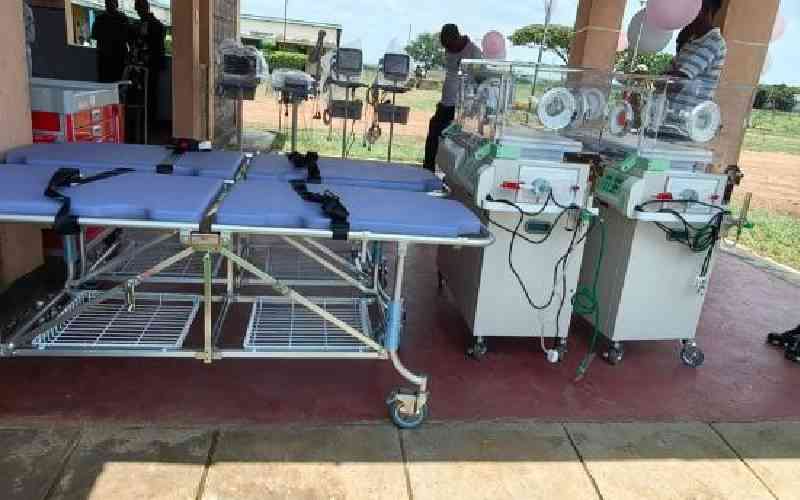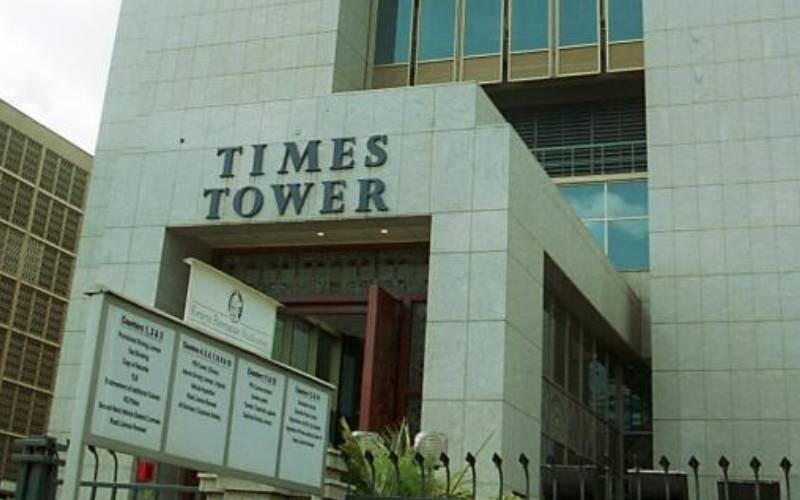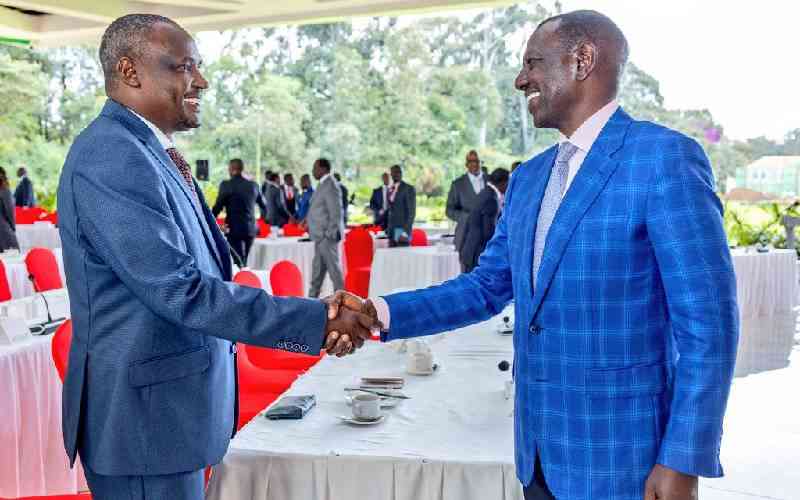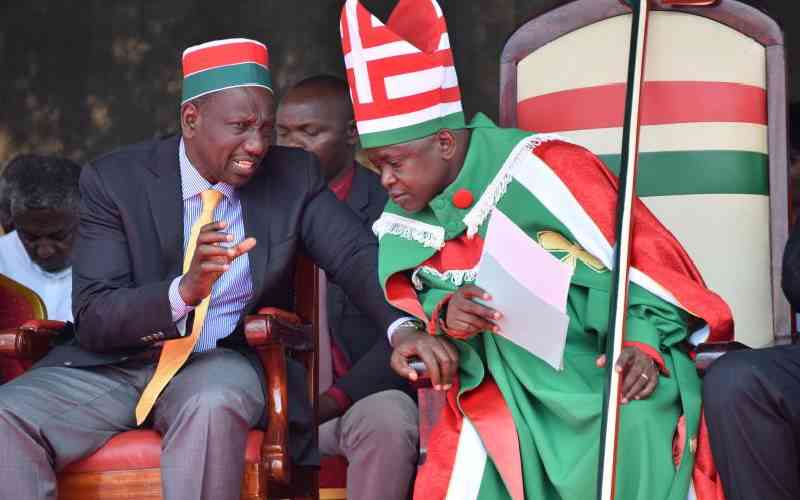By Emmanuel Were
Nairobi, Kenya: British currency printer, De La Rue is wooing the Government with the promise of a quick return on investment to push through a joint venture currency printing agreement.
The Government is set to pay Sh713 million (£5 million) for a 40 per cent stake in a joint venture with De La Rue Currency and Security Print, the local subsidiary of the British firm.
Projections by De La Rue estimate the Government will recoup its investment in three years, according to documents in Business Beat’s possession.
The deal looks too good for the Government, given that there have been a lot of questions on how the 40 per cent stake was valued — no competing bids were allowed and the status and viability of the Ruaraka printing plant are not clear.
The joint venture is being rushed to be concluded as early as next month.
The calculations
De La Rue estimates that its Kenyan subsidiary will make Sh713 million in earnings before interest and tax (EBIT) in its financial year that ends in March 2014.
The EBIT earnings for this period are equivalent to what the Government will have invested into the business for a 40 per cent stake.
It means the Government’s 40 per cent share of the EBIT for the year to March 2014 will be Sh285 million.
In the next financial year, which ends in March 2015, the Kenyan subsidiary estimates it will make Sh755 million in EBIT. The Government will be entitled to Sh302 million.
And finally, the Government will earn the remaining Sh126 million, plus a little extra, by March 2016. This is assuming the current earnings trend for the last five years continue. De La Rue did not have estimates to March 2016.
But these projections are based on the earnings before interest and taxes, which gives a wrong picture on the return on investment.
The correct position is that the returns should be considered after paying for corporate tax. If corporate tax of about 30 per cent is paid, it would take the Government much longer to make a return from the proposed joint venture.
There is also the possibility of the Government having to pump in more money to upgrade some of the equipment at the Ruaraka plant.
Stay informed. Subscribe to our newsletter
Ideally, the Government would be entitled to dividends just like it gets from its shareholding in a number of corporations, like listed Safaricom, Kenya Airways and Kenya Power.
The proposed joint venture has dragged on since 2006 as it has been subjected to a lot of scrutiny from several quarters, among them the parliamentary watchdog, Public Investment Committee.
De La Rue signed a 10-year contract with the government of former President Daniel arap Moi.
But when former President Mwai Kibaki took office in 2003, the then Finance minister David Mwiraria cancelled the deal. Mr Mwiraria advised the Central Bank to open a fresh tender.
In May 2006, De La Rue won the contract worth Sh4.4 billion to print 1.7 billion pieces of new-look bank notes.
Government’s about-turn
But after De La Rue had been paid Sh2.2 billion as a deposit, the Government changed its mind and decided to buy shares in the currency printer instead.
Perhaps it realised, albeit a little late in the day, that it had been getting the short end of the stick. A joint venture would lower its printing costs and give it a share of the profits.
In its quest to maintain its monopoly status, De La Rue has argued that it gives back to the Kenyan economy about Sh1.3 billion every year in the form of taxes, local purchases and net salaries.
The Sh713 million the Government would invest for a 40 per cent stake in De La Rue will be for both the assets and working capital.
And the argument has been that if the Government does not support De La Rue, the plant in Ruaraka might as well be shut down.
“The closure of the Ruaraka plant would also give the wrong signal to potential investors, who most likely would interpret it to mean a serious erosion of investor confidence in Kenya,” said a joint Cabinet memorandum passed on December 6, 2013, and signed by Treasury Cabinet Secretary Henry Rotich.
It seems, though, that Mr Rotich was just advancing to the Cabinet, word-for-word arguments presented to him by De La Rue two months earlier.
In a letter dated October 25, 2013 and addressed to Mr Rotich by the currency printer, Tim Cobbold, De La Rue’s chief executive, notes that the joint venture will demonstrate that Kenya is open for business to international investors.
This letter was sent shortly after Mr Cobbold and Rotich met in Washington to discuss the deal.
“The formation of the JV will demonstrate, on the international stage, Kenya’s continued strong interest in international investment and its attractiveness to international business. This is perhaps particularly important in the current climate and in regards to Vision 2030,” Cobbold notes in the letter.
He continues: “Conversely, the closure of the Ruaraka plant may give the wrong sort of signal to potential investors in Kenya.”
Flawed argument
However, this might be a flawed argument.
The fact is that the Ruaraka plant is not the most competitive of De La Rue plants in terms of cost and efficiency.
Some of the machines are obsolete and require replacement, meaning more money needs to be pumped in to print new generation notes with additional security features.
But Cabinet has come out to defend the printer, saying the company is profitable and able to acquire any new equipment required.
De La Rue also argues that the Ruaraka plant has the equipment and capacity to produce the new generation bank notes.
“At the current staffing levels, the plant has an annual production capacity of 600 million notes per annum. The last generation tender required 1,710 million notes to be produced in just over three years — 513 million per annum — so there is more than adequate capacity available,” said De La Rue.
The Cabinet document presented in December by Rotich further argues that since Kenya is positioning itself as a regional financial services hub, the joint venture with De La Rue would be one of the projects showcasing the country’s expertise in the sector.
The Government would get two directors to De La Rue’s three, making a total of five directors in the joint venture.
The Government would also appoint the chair of the board, giving it “enough leverage to influence business and other decisions that would impact on profitability and viability of the company”.
The about-turns the Government and De La Rue have made on some of the points they had previously defended, however, are a cause of concern.
Take, for example, the 10-year monopoly of the joint venture agreement.
In a Cabinet memorandum presented by Rotich, the Treasury Cabinet Secretary defends the 10-year monopoly contract, quoting a section of the Public Procurement and Disposal Act that allows for single sourcing.
“The direct procurement method for the 10-year currency supply contract was consistent with Section 74 ‘2b’ that permits direct procurement where there was no reasonable alternative for the goods or services,” reads the memo presented last month.
“The Public Procurement Oversight Authority has since confirmed that CBK can enter into a 10-year supply contract with De La Rue.”
Money-spinning lifeline
De La Rue’s lifeline is currency printing, since for every Sh10 the Ruaraka-based plant earns, Sh9 comes from its deal with CBK.
The other Sh1 comes from printing security documents for banks and other clients.
This is why the 10-year monopoly deal is so important to the company.
However, it is only in Kenya that De La Rue has a monopoly in printing currency. In other countries in the region, it holds a minority position.
In Tanzania, De La Rue prints only one denomination of notes, while a competitor — Crane — prints the other four denominations.
In Uganda three firms — Obethur, G&D and De La Rue — have been contracted to do the printing.
Obethur prints three denominations, G&D two denominations and De La Rue one. It also competes with these two printers in Rwanda and Ethiopia.
However, in a recent turn of events, De La Rue agreed to drop the demand for a 10-year contract.
The British company said it was confident it could take up other opportunities in the region, such as the printing of the single currency.
In fact, it even pitches the Ruaraka factory as a big opportunity for the Government: “The DLR factory is the only regional bank note printing facility, thus providing an opportunity for the GOK to take a major part in any future common currency supply to the EAC [East African Community],” reads a letter from the company to Rotich.
De La Rue estimates that the EAC single currency would push up the volume of bank notes required annually to 2.4 billion by 2018, from the current 1.9 billion.
So if the printer is willing to let go of some of the demands, it appears there is a bit of desperation from it to get Kenyan business.
The question, then, is how much more the Government can push and negotiate to get better terms from the British firm.
Can it negotiate a better price for the 40 per cent? And if the two parties disagree and part ways, will the Government be entitled to the intellectual property rights? What assets will remain in its hands?
Venture’s potential
Partnerships and joint ventures can succeed or go horribly wrong.
Take, for example, the Government’s investment in the telecoms sector.
Its 40 per cent stake in Safaricom has turned out to be a very prudent investment, earning Treasury billions in dividends. Also, Safaricom’s share price has more than doubled since the initial public offering in 2008.
On the other hand, the 30 per cent stake it holds in Telkom Kenya has been disastrous, with the company making losses and requiring more investment to turn things around.
In the private sector, the marriage of convenience between East African Breweries and SABMiller, where they had joint operations in Kenya and Tanzania, ended in 2009.
EABL sold a 20 per cent in Kenya Breweries to SABMiller, while the South African brewer sold a 20 per cent stake in Tanzania Breweries to EABL.
These transactions happened in 2002 when the brewers agreed to share the Kenyan and Tanzanian market after stiff competition.
However, EABL realised it was paying out more to SABMiller from the Kenyan operation compared to what it was getting in Tanzania.
Eventually both parties agreed to part ways, with EABL buying out SABMiller from Kenya Breweries for Sh19.5 billion.
EABL only got Sh6.1 billion from the sale of it 20 per cent stake in Tanzania Breweries.
[email protected]
 The Standard Group Plc is a
multi-media organization with investments in media platforms spanning newspaper
print operations, television, radio broadcasting, digital and online services. The
Standard Group is recognized as a leading multi-media house in Kenya with a key
influence in matters of national and international interest.
The Standard Group Plc is a
multi-media organization with investments in media platforms spanning newspaper
print operations, television, radio broadcasting, digital and online services. The
Standard Group is recognized as a leading multi-media house in Kenya with a key
influence in matters of national and international interest.
 The Standard Group Plc is a
multi-media organization with investments in media platforms spanning newspaper
print operations, television, radio broadcasting, digital and online services. The
Standard Group is recognized as a leading multi-media house in Kenya with a key
influence in matters of national and international interest.
The Standard Group Plc is a
multi-media organization with investments in media platforms spanning newspaper
print operations, television, radio broadcasting, digital and online services. The
Standard Group is recognized as a leading multi-media house in Kenya with a key
influence in matters of national and international interest.






